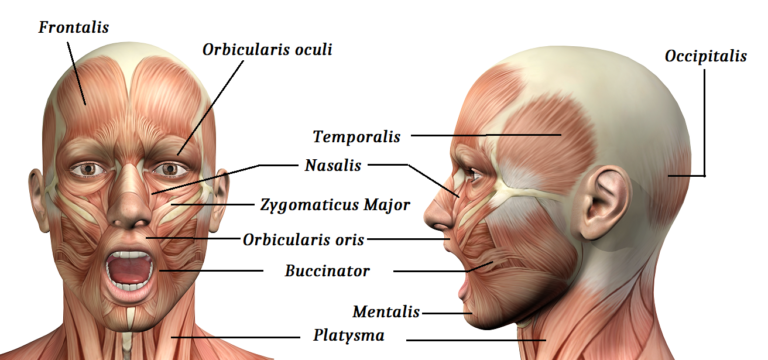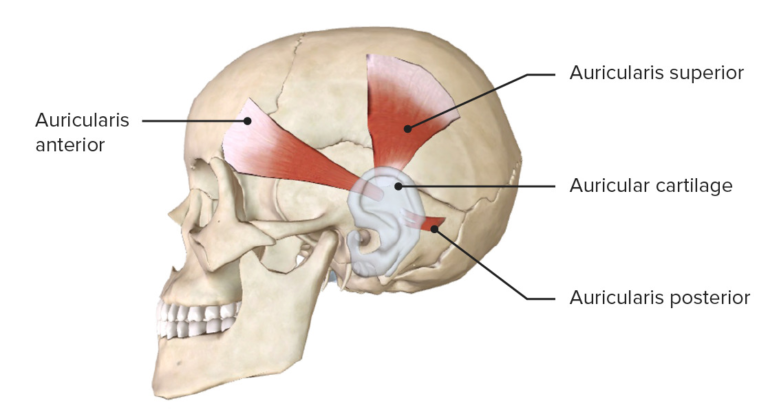Head & Facial Muscle
Facial muscles work together to control the functioning of parts of our face. They are essential to chewing and making facial expressions. The face has almost 20 flat skeletal muscles that attach to different places on the skull. These craniofacial muscles originate from bone or fascia and insert into the skin.
Introduction
Facial muscles are located throughout your face. They can be categorized by their location:
- Buccolabial muscles in and around the mouth.
- Nasal muscles around the nose.
- Epi-cranial muscles of the forehead, skull and neck.
- Auricular muscles around the ears.
- Orbital muscles surrounding the eyes.
- The muscles of the cranium of the skull are Teporalis, Frontalis and Occipitalis.
Did you know the face has 43 muscles?
These are tiny muscles that control facial expressions like smiling, smirking and frowning, raising the eyebrows, pouting and for chewing.
Some Muscles of the Face and Head

Discussion on Some of the Facial Muscles
The orbicularis oris is a muscle that surrounds the mouth and forms the lips.
The facial muscles involved in chewing are:
- Buccinator, a thin muscle in the cheek that holds the cheek toward the teeth.
- Lateral pterygoid, a fan-shaped muscle that helps in opening the jaw .
- Masseter, a muscle that runs from the cheekbone to the lower jaw and brings the teeth back together to grind up food. The Masseter is the strongest muscle in the human body.
The muscles of facial expressions are:
- Auriculars, allow some people to move their ears.
- Corrugator supercilii, which is near the eyebrow and enables frowning.
- Occipitofrontalis, a muscle that extends from the eyebrows to the top of your skull that can raise the eyebrows and wrinkle the forehead.
- Orbicularis oculi, which closes the eyelids.
Some Muscles of the Face around the Ear

The auricular muscles are thin, fan-shaped muscles that connect the auricle to the scalp, and move the auricle to a certain extent.
- The ear muscles include the auricularis superior, auricularis anterior and auricularis posterior muscles.
- They are vestigial in humans and few individuals can move their ears voluntarily.


Comments (4)
temp mail - March 15, 2024
I do not even know how I ended up here but I thought this post was great I dont know who you are but definitely youre going to a famous blogger if you arent already Cheers.
cerebrozen reviews - April 2, 2024
I truly admired the work you’ve put in here. The design is refined, your authored material stylish, however, you seem to have acquired some trepidation about what you intend to present next. Undoubtedly, I’ll revisit more regularly, similar to I have nearly all the time, in the event you sustain this rise.
sugar defender side effects - April 11, 2024
I was recommended this website by my cousin I am not sure whether this post is written by him as nobody else know such detailed about my difficulty You are wonderful Thanks
Mitolyn - March 20, 2025
Mitolyn Hi there to all, for the reason that I am genuinely keen of reading this website’s post to be updated on a regular basis. It carries pleasant stuff.